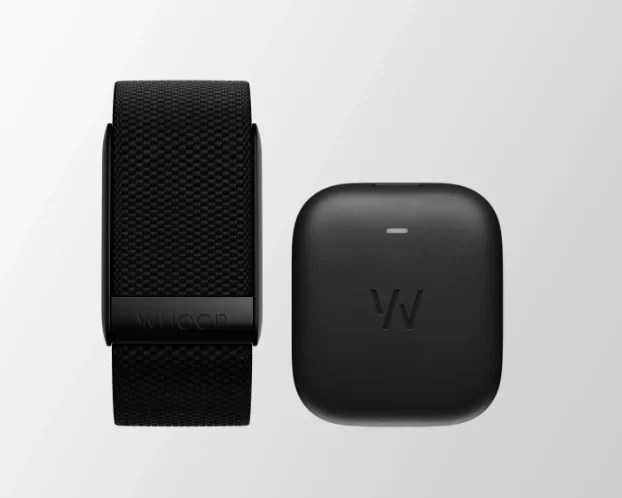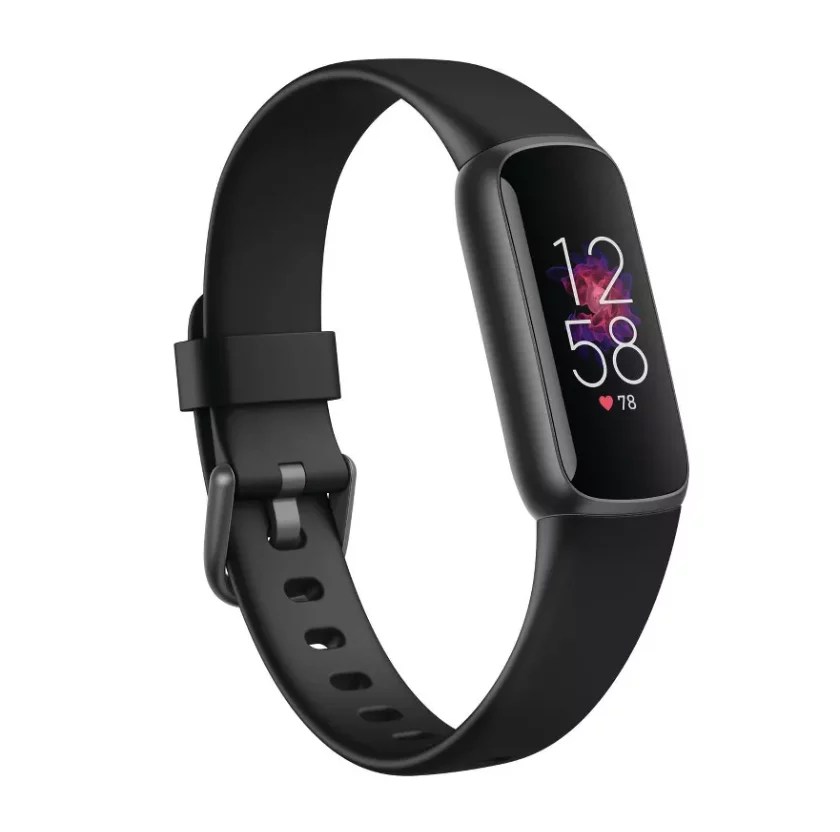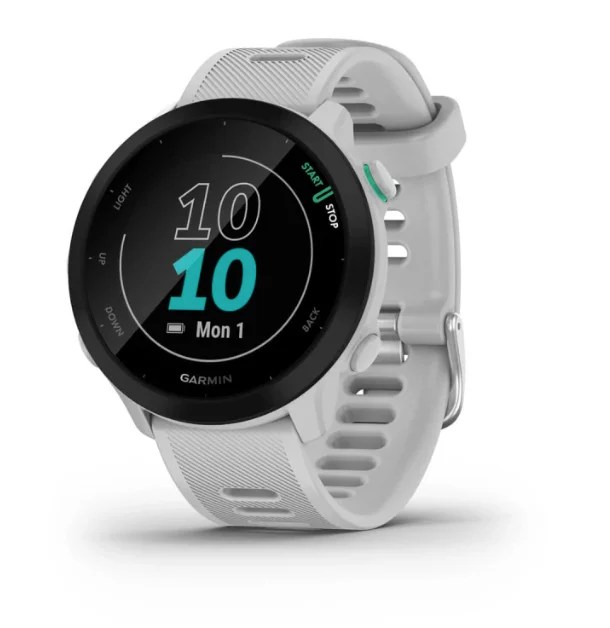We’ve all been at the gym and seen Billy. Billy is doing the most. He is jumping rope at a pace that opens the space-time continuum. He is doing every push-up that needs to be done. He is s-p-r-i-n-t-i-n-g on that treadmill. And when you get to the gym tomorrow, Billy will be there—doing the most again.
While you can certainly train like Billy if that’s your jam, the age of rise-and-grind fitness is coming to an end. In-the-know athletes are swapping seven-days-a-week HIIT classes for a more balanced repertoire that includes recovery, mobility work, and Zone 2 training, an approach to working out that maximizes your comfortability for the long haul.
Zone 2 training comes from a fitness method called “heart-rate” training. In this method, there are five thresholds or zones at which your heart is pumping at a percentage of its maximum capacity. Zone 1 is roughly what you’re doing when you warm up and cool down, while Zone 5 maxes out your heart rate with quick-hit, high-intensity bursts of work that leave you feeling breathless. Zone 2 focuses on how your body performs for an extended period of time at a moderate intensity level.
“The significance is that it builds muscular endurance,” says Olivia Amato, a Peloton tread, bike, and strength coach, “allowing you to sustain an effort for longer periods and helping you to use your energy more efficiently.”
Understanding Zone 2 training
While it has a name that would make a guy like Billy talk at you for hours on end, Zone 2 training isn’t all that complicated. It’s categorized as any cardio effort that uses about 60 to 70 percent of your maximum heart rate. For those who aren’t wearing trackers all the time, that feels like an effort that would allow you to hold a casual conversation for about an hour or so. For some, that might be a brisk walk or light-ish jog, while for others, it may be more of a mid-level run. On the bike, your combined speed and resistance would be light enough that you could belt “Cruel Summer” while feeling your feels.
“Everyone’s heart rate zones can vary based on factors such as age, fitness level, and individual characteristics,” says Kristen Holmes, vice president of performance science and principal scientist at Whoop, a heart-monitoring wristband. The upside is that anyone at any level can hit their Zone 2 to build their endurance.
The science behind building endurance—and why it’s so buzzy
To see why Zone 2 is so impactful, it’s important to understand aerobic versus anaerobic training, which target two different systems in your body—and have different positive performance effects on your health, according to Jessica Chang, DPT, OCS, a physical therapist and trainer with MotivN. “Anaerobic training requires your body to produce force without using oxygen, and often looks like sprints or HIIT-style workouts,” she says. On the other hand, Daniel J. Makowski, DO, a cardiologist at the Lehigh Valley Heart and Vascular Institute, explains that aerobic exercise “is performed at a level where the heart is able to deliver plentiful oxygenated blood to working muscles, which usually involves training at a lower intensity, for a longer period of time.”
Zone 2 training is all about the latter, says Nichele Cihlar, director of training at Goruck. “Zone 2 training is essential for aerobic development,” she says. “It results in a more stable energy burn that allows you to avoid acute fatigue and continue to exercise for long durations.”
“This is something that’s sustainable—whether you’re a high-performing athlete or you’re new, it will feel good mentally and physically.” —Olivia Amato
Aerobic training is thought by longevity researchers to signal the production of brand-new cellular powerhouses called mitochondria. This is important for a few reasons. Our bodies contain complex, complicated cell systems that affect how we feel, how much energy we have, and how long we can sustain different efforts. When we clear out old, junky mitochondria and replace them with new, spry ones, scientists have found that we’re better able to convert the body’s fuel, like fats and glucose, into energy. “[Mitochondria] are essential for energy production for cellular processes,” says Dr. Makowski. “Aerobic exercise will improve the number of mitochondria, the efficiency of the mitochondria, and the ability of the mitochondria to use fat and glucose rather than glucose alone as an energy source.” This gives cells a robust, plentiful energy supply to draw from during endurance activities, ensuring you won’t go off an energy cliff during a sustained effort.
When we produce new mitochondria again and again through consistent Zone 2 training, our bodies become more resistant to exercise. We’re able to run longer, lift more, cycle harder. All of that is because our bodies are changing cellularly. “[Zone 2 training] improves the function and efficiency of your cells’ mitochondria so that they are more tolerant to harder training later on,” says Chang. We’re able to build endurance and recover quicker.
Other benefits of Zone 2 training
Improved endurance isn’t the only perk of this type of training. Experts point to a few others.
1. It keeps you from getting injured
According to Amato, Zone 2 training makes you less likely to overwork yourself. “If you’re doing HIIT workouts daily, that’s when you can overtrain, and you start to get breaks and tears and all that kind of stuff,” she says. Yet with more moderate intensity Zone 2 work, “you’re still getting a workout in and getting stronger, inside and outside, without that intense work.”
2. It helps you to recover
“If done properly, it will enhance your training by accelerating important dimensions of recovery,” says Holmes, citing that Zone 2 decreases your body’s fight-or-flight responses1, improves resting heart rate2, and enhances blood flow3 through the body during sustained efforts.
This can make it an ideal recovery session between your other workouts—whether you’re lifting weights or running sprints—to get you back on your feet faster. “You know that feeling when you work out, and you’re sore for like three days after?” adds Amato. “Endurance training will help lower the intensity of that and lessen the recovery time you need between workouts.” Take that, Billy.
3. It regulates glucose and helps with insulin sensitivity
Insulin is the hormone in your body that helps glucose enter muscles to give them energy. When someone is insulin resistant, their bodies can’t bring in glucose, which can result in Type 2 diabetes. What’s more, scientists are proving out that insulin and glucose4 influence key cellular processes and metabolic functions that can affect our longevity.
And you guessed it—Zone 2 training can have a positive impact on this process. “Not only is glucose metabolized to produce energy or ATP, but during aerobic metabolism, free fatty acids are also converted into acetyl coenzyme A in the mitochondria through beta-oxidation,” says Joseph A. Wong, MD, a physical medicine and rehabilitation physician at the Atlantic Health System. In short, this means that the increased number of mitochondria and their enlarged size make your body better able to process glucose and regulate blood sugar levels.
4. It makes a consistent fitness routine more doable
Amato points out that Zone 2 offers the kind of comfortable intensity that you’ll regularly want to come back to. Which makes you less likely to flame out on your workout plan. “This is something that’s sustainable—whether you’re a high-performing athlete or you’re new, it will feel good mentally and physically,” she says.
5. It boosts longevity
If you follow any longevity threads closely, you’ll notice that the buzziest names in the biz—people like Peter Attia, MD—readily recommend Zone 2 training to their audiences. The reason why has a lot to do with everything you’ve already read. Zone 2 training strengthens your heart muscle through aerobic exercise; it improves cellular function, making you better able to process and use energy; it improves insulin sensitivity, bringing energy directly to your muscles; and it’s the type of exercise that feels good so you want to keep doing it daily.
Crafting your Zone 2 training plan
If you’re sold on Zone 2 and want to start training ASAP, the main requirement you’ll need is time. Unlike HIIT, which gets you in and out of the gym in a jiffy, Zone 2 training will require some bigger blocks on your calendar if you want to reap the full benefits—though it’s important to note this doesn’t necessarily mean you need to exercise for hours on end.
Amato suggests following the 80/20 rule, meaning roughly 80 percent of your efforts are aerobic or endurance-based while 20 percent are anaerobic workouts. If you need a rough starting place in terms of time, Holmes suggests beginners add in about two hours of Zone 2 training per week and if time permits, pushing that number upward as you continue to train.
To that end, it’s important not to think that more means better. “The lower intensity level of Zone 2 allows you to go longer and farther without breaking down, but it still doesn’t mean you should go for as long as you can,” says Dr. Chang. “Think about these workouts as gradual exposure to hardship to increase your body’s tolerance to the training rather than shocking the system so badly that you compromise your next workout.”
As for the modalities to reach for, it kind of depends on your preferences and goals. If you like to run, then lace up; if you’re into cycling, clip in. Row. Ski. Hike. Swim. Your main goal here is simply to keep your heart rate at about 60 to 70 percent of its max, however you get there.
There are a few methods that you can use to go about calculating what your personal heart rate zones are. Amato says that on a bike you can take an FTP test which tells you how much power you use. You can also do a VO2 Max test, which Dr. Chang says will give you your exact Zone 2 parameters.
Essential gear and tools
If you’re looking to try Zone 2 training, it might be helpful to get some kind of a heart rate monitor that allows you to check in with where your pulse is at so you know how hard to push it. Here are a few to try:
Well+Good articles reference scientific, reliable, recent, robust studies to back up the information we share. You can trust us along your wellness journey.
- Buchheit, M et al. “Effects of increased training load on vagal-related indexes of heart rate variability: a novel sleep approach.” American journal of physiology. Heart and circulatory physiology vol. 287,6 (2004): H2813-8. doi:10.1152/ajpheart.00490.2004
- Iwasaki, Ken-Ichi et al. “Dose-response relationship of the cardiovascular adaptation to endurance training in healthy adults: how much training for what benefit?.” Journal of applied physiology (Bethesda, Md. : 1985) vol. 95,4 (2003): 1575-83. doi:10.1152/japplphysiol.00482.2003
- Weeks, Kate L, and Julie R McMullen. “The athlete’s heart vs. the failing heart: can signaling explain the two distinct outcomes?.” Physiology (Bethesda, Md.) vol. 26,2 (2011): 97-105. doi:10.1152/physiol.00043.2010
- Akintola, Abimbola A, and Diana van Heemst. “Insulin, aging, and the brain: mechanisms and implications.” Frontiers in endocrinology vol. 6 13. 6 Feb. 2015, doi:10.3389/fendo.2015.00013
Our editors independently select these products. Making a purchase through our links may earn Well+Good a commission.



